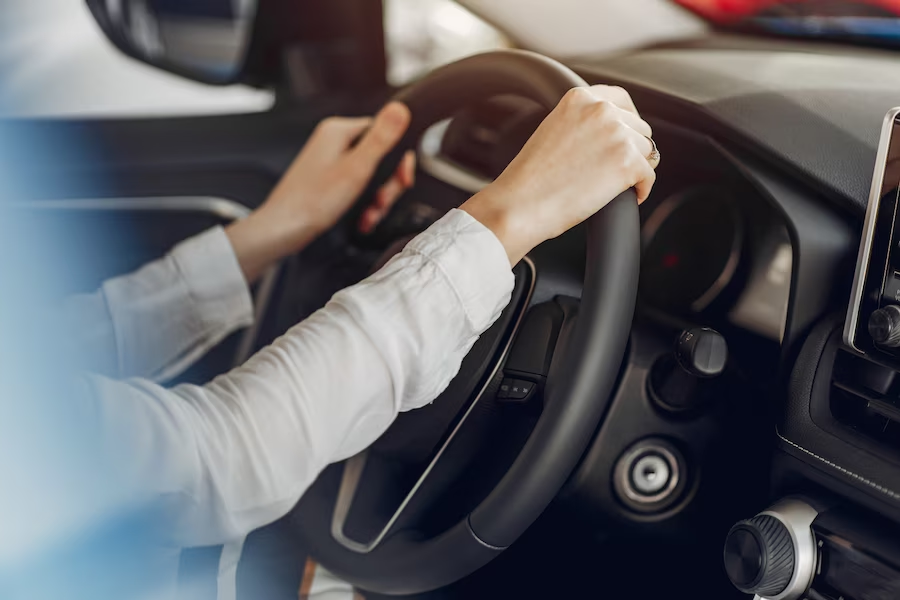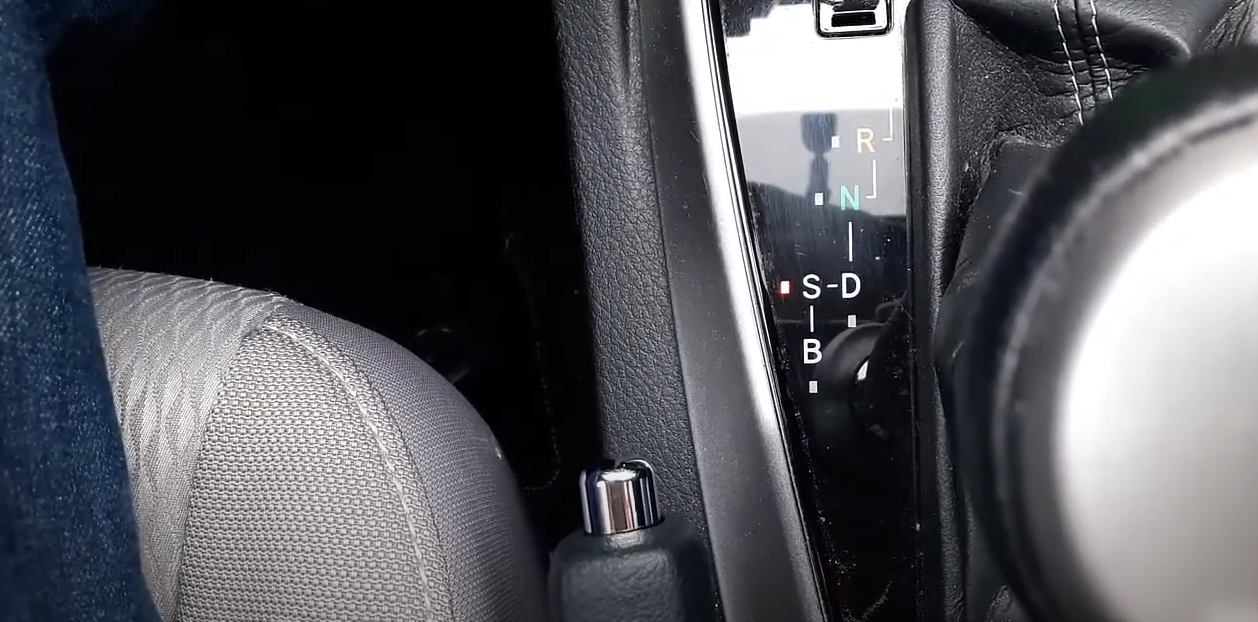The Toyota Corolla has gained immense recognition due to its remarkable Continuously Variable Transmission (CVT), which revolutionizes the vehicle’s performance. To truly grasp the significance of CVT, one must delve into the realm of the ‘B’ gear, an exceptional attribute that substantially augments the car’s adaptability and maneuverability under specific circumstances.
Continuous Variable Transmission (CVT)
Unlike conventional automatic or manual transmissions, the CVT doesn’t have a fixed number of gear ratios. Instead, it provides a virtually unlimited range of ratios, allowing the engine to operate at the most efficient speed regardless of how fast the car is traveling. This results in smoother acceleration, better fuel efficiency, and an overall improved driving experience.
The CVT achieves this through the use of two pulleys with a belt connecting them. The diameters of these pulleys can change in response to power needs, resulting in different gear ratios.
The B Gear
In a Continuously Variable Transmission (CVT), the ‘B’ mode, short for ‘Brake’ or ‘Engine Braking’ mode, serves as a valuable complement to the unlimited gear ratios provided by the CVT. The B gear utilizes the engine’s power to regulate the vehicle’s speed, reducing the necessity for frequent use of the brake pedal. This mode is particularly advantageous when descending steep hills, where continuous braking can result in overheating and potential brake failure.
Functionality of the B Gear
The B gear in a CVT offers a distinctive functionality that differentiates it from the conventional Drive (D) mode. While the D mode prioritizes smooth acceleration and fuel efficiency by allowing the CVT to adjust the gear ratio automatically, the B mode provides enhanced engine braking.
Engine braking involves utilizing the resistance generated by the engine to slow down the vehicle, similar to the effect of traditional brakes. In the B mode, the CVT system adjusts the gear ratio to maximize engine braking force, effectively controlling the vehicle’s speed without solely relying on the brakes.
Benefits of the B Gear
| Benefits of B Gear on Steep Declines | Description |
|---|---|
| Improved Safety | The B gear enhances safety on steep slopes by allowing the engine to provide resistance and reduce strain on the braking system. This mitigates the risk of overheating the brakes, preventing brake fade or failure. |
| Reduced Brake Wear and Maintenance | By reducing reliance on traditional braking, the B gear minimizes wear and tear on the braking system. It utilizes the engine’s resistance to control speed, resulting in less stress and heat buildup on brake pads and rotors. This extends the overall lifespan of braking components and reduces the need for frequent maintenance. |
| Enhanced Fuel Efficiency | Engaging the B gear during descents improves fuel efficiency compared to using conventional brakes. Instead of dissipating energy through braking, engine braking converts the vehicle’s motion into usable energy, reducing the load on the engine. This process conserves fuel and optimizes overall vehicle efficiency. |
| Smoother and More Controlled Descents | The B gear leverages the engine’s braking power, ensuring a smooth and controlled descent experience. The CVT system adjusts the gear ratio to match the desired speed, resulting in gradual velocity decrease. This reduces the need for frequent braking inputs and promotes a comfortable and predictable driving experience on downhill terrain. |
Comparison between B Gear and Conventional Braking
| Aspect | B Gear | Conventional Braking |
|---|---|---|
| Safety | Reduces risk of brake overheating | Requires careful braking |
| Brake Wear and Tear | Minimizes stress on brake system | Puts strain on brake components |
| Fuel Efficiency | Improves fuel efficiency | Dissipates energy as heat |
| Control and Smoothness | Provides controlled descent | Requires frequent braking inputs |
Insights from Video Tutorials on the B Gear
Online video tutorials provide invaluable practical insights on using the B gear in the Toyota Corolla. These videos are not only educational but also provide visual guides that can significantly enhance a driver’s understanding and mastery of the B gear. Key points we’ve gleaned from these tutorials include:
When to use B gear
Most video tutorials underscore that the B gear is primarily designed for use when descending steep hills. It should be selected before starting the descent to leverage engine braking effectively.
Video tutorial insights also suggest that the B gear can be beneficial in heavy traffic, where it can be used to control the vehicle’s speed and reduce the need for constant braking. This could potentially extend the lifespan of your brake pads and discs.
Shifting to B gear
From the videos reviewed, shifting to B gear is straightforward. While driving, you simply move the gear shift from D (Drive) to B without pressing any buttons or taking any additional steps.
Not for regular driving
A common theme across multiple tutorials is that B gear is not intended for regular driving. Its primary purpose is to provide engine braking during downhill descents or in heavy traffic conditions. Continuous use of B gear during regular driving may lead to increased fuel consumption due to the higher engine RPMs and unnecessary engine wear.
Advantages of Utilizing the B Gear

Alt: Hands on a car steering wheel
There are several benefits to the B gear in the Toyota Corolla, enhancing the overall safety and performance of the vehicle.
- Increased Safety: The B gear offers a substantial safety advantage by using the engine to control the vehicle’s speed, thus reducing reliance on the vehicle’s braking system. This aids in preventing brake overheating and wear. Overheated brakes can potentially fail, a risk that’s especially high during steep descents when brakes are used frequently. Using the B gear in these situations can therefore improve safety significantly;
- Improved Fuel Efficiency: Contrary to what some might assume, using the B gear in the correct situations can actually contribute to better fuel economy. When going downhill, using engine braking instead of regularly applying the brakes can result in lower fuel consumption. However, it’s worth noting that this is a situational benefit – using B gear during normal driving conditions can lead to increased fuel consumption due to higher engine RPMs;
- Enhanced Vehicle Control: The B gear can give drivers better control over their vehicle’s speed in challenging driving conditions. This is especially helpful when going down steep hills or driving in heavy traffic. By reducing the need for constant braking, the B gear allows drivers to focus more on steering and assessing the road conditions.
Conclusion
The B gear in a Toyota Corolla is a feature designed to enhance the safety, control, and fuel efficiency of the vehicle in certain driving conditions. Understanding when and how to use it, as showcased in various video tutorials, can help you optimize these benefits and maintain your vehicle’s top performance.
FAQ
Driving in B gear all the time is not advisable. This mode increases engine RPMs, which could lead to higher fuel consumption and potentially faster engine wear.
Yes, you can switch to B gear at any speed. However, it’s recommended to switch to B gear before starting a downhill descent, not while you’re in the middle of it.
No, using B gear does not damage the engine or transmission. It’s a feature specifically designed to help control the vehicle’s speed when descending steep hills.
In traditional automatic transmissions, lower gears (like 1, 2, or 3) are used for similar purposes as B gear – to control speed when going down steep hills and to provide more power when needed. However, the mechanisms are different. Lower gears limit the transmission to certain gear levels, whereas B gear in a CVT uses the engine to control speed.
